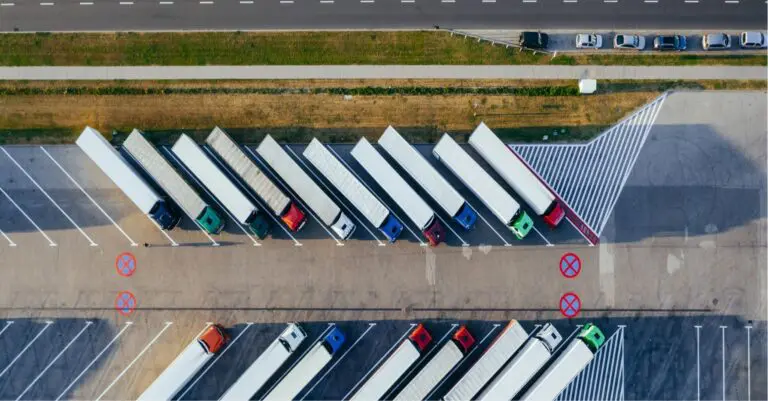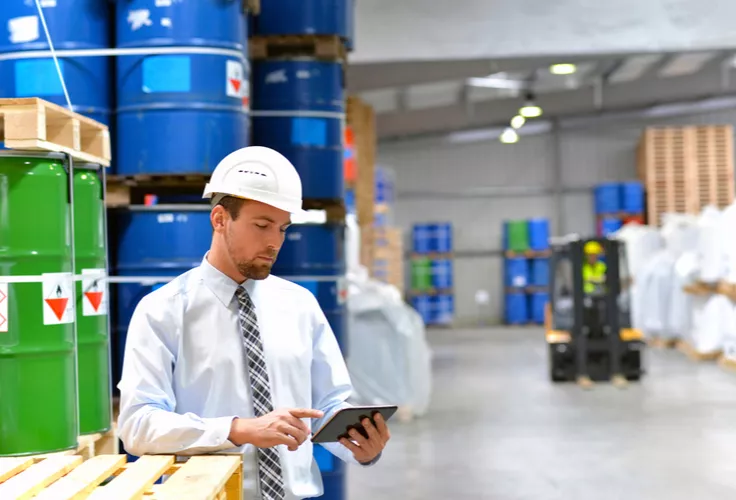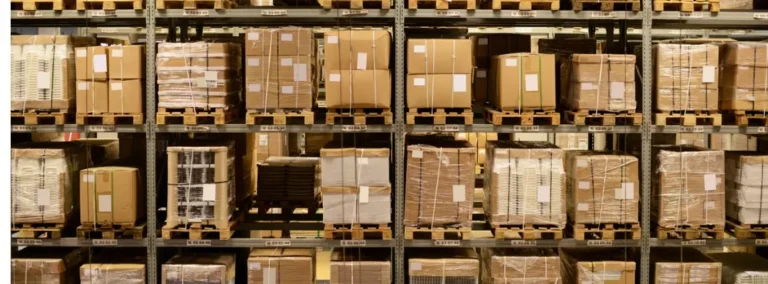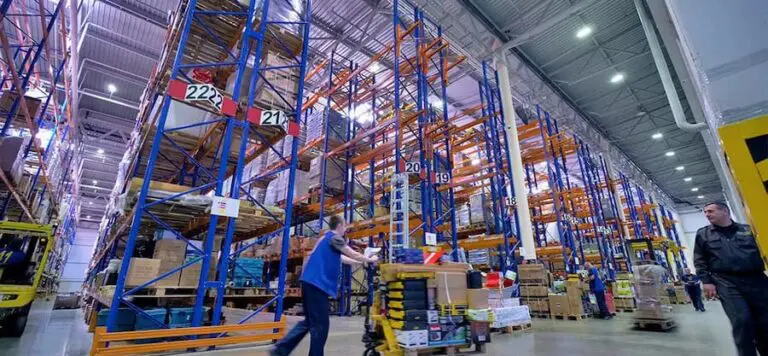What is 3PL?
Whether you’re a burgeoning Ecommerce business, a retail company seeking cost-reduction solutions, or any other type of company with materials or products to transport or store, you may be wondering, “What is 3PL?” Third-party logistics, or 3PL, is a service that allows companies to outsource operational logistics, warehousing and more. It provides end-to-end assistance in managing and moving your products and allows organizations to focus on their business while the pros handle the heavy lifting. Chemical and industrial companies and manufacturers that ship a range of materials — sometimes hazardous — are other great examples of companies that can rely on the expertise of 3PLs.
Why do 3PL services matter in the supply chain? By turning to a trusted 3rd-party logistics company, it’s possible to streamline operations, improve efficiencies, and ensure end-customers are satisfied with the delivery process. The investment in 3PL distribution could enhance outcomes and help your business deliver the very best while maximizing profit margins.
COMPREHENSIVE LOGISTICS SERVICE
The 3PL partner you choose should be based on the tasks and solutions you need to better manage your business. You’ll want a company that offers a range of services to meet your requirements from one end of the process to the other. Below are some of the capabilities you should consider when evaluating a 3rd-party logistics provider.
• Distribution and warehousing services: Only a handful of 3PL providers can handle contract services, chemical logistics, transportation, returns management, custom packaging, repacking and assembly, and more.
• Fulfillment: At the heart of moving product is fulfillment, and it is one of the most labor-intensive processes. It involves inventory management, retailer experience, returns management, advanced ship notice (ASN), and precise labeling and packaging. Whether you’re a B2C or B2B operation, make sure your 3PL provider can realize your fulfillment needs.
• Import and export abilities: Moving products around the world is a complex process, so it’s important to work with a company that has global reach and diverse experience. Consider establishing an international distribution strategy that could handle inbound and outbound shipping while providing significant cost-savings. Additionally, import/export services should have some sort of worldwide agent network; air, ocean, road, and rail solutions; and online tracking and tracing.
• Logistics technology: IIoT and smart technology is the future. Don’t get left behind with an outdated logistics provider. You’ll want cloud-based management solutions for every aspect of your supply chain that can improve efficiency and create true operational success. A component of this software might include a transportation management system (TMS), an order management system (OMS), and B2B Collaboration /EDI integration. A professional 3PL team can use data to create actionable intelligence that propels your operation forward.
• Transload services: Transload services can be improved with the right team behind you. Make sure you discuss how to ensure that your lead times remain accurate and loading and unloading rail cars is as efficient as possible. Plus, some providers might be able to reduce costs while also mitigating the environmental impact of rail transport across the country.
• Other Transportation: A global 3PL transportation network can be incredibly helpful for short- or long-distance shipments. Look for a company that can provide FTL, LTL, FCL, LCL, intermodal shipments, and more. These services should improve mobility and offer container drayage services, contract and spot rates, and brokerage capabilities. Additionally, claims management, dropped trailer skills, and temp controlled or expedited solutions are must-haves.
• Contract Services: When you outsource contract services to a trusted 3PL provider, you reap a number of benefits. Choose the warehousing services that best fit your needs. This may include import and export services, labor management, fulfillment, transportation, or warehousing and distribution — or a combination. The advantage of tailoring these services is that you only pay for what you need, saving time, money, and countless headaches.
THE BENEFITS OF USING A 3PL PROVIDER
What is the real benefit of third-party logistics services? Many times, businesses do not have the time, opportunity, bandwidth, or funds to create the right combination of solutions to meet each of your needs. Let a capable 3PL provider take care of the details. Some advantages of a 3PL management company include:
• Cost reduction: Using a 3PL provider is one of the most important changes to make to reduce your costs. Most companies work with multiple customers, allowing them to lower costs and the impact on the environment as a whole.
• Scalable operations: Another key benefit to logistics services is that they can be amped up or down depending on the size of your company. Make changes to your logistics needs based on your specific needs. You’re likely to see less fluctuation in demand throughout the year with this flexibility.
• Advanced technology: Investing in and operating with the latest in logistics technology is not a priority for many companies. It is for a 3PL provider. Thus, you can leverage those advances through a 3PL that utilizes up-to-date warehouse management systems, transportation management systems, and API/EDI integrations.
• Less risk: Using a 3PL company should help you save money, but they also help you mitigate the risk of shipping delays and disruptions. These can be costly and often lead to significant downtime in your operations that could be avoided with a professional team managing your facility.
• Access to new markets: With 3PL services — especially global solutions — gain access to markets around the world and at home. You can test new audiences for your products without having to worry about the commitment and the costs that go with it.
• Better customer service: With the rise in online shopping, the consumer is closer to the logistics process than ever. However, this does not mean you can overlook the importance of quality customer service. With certain 3PL providers, your patrons can expect next-day or same-day shipping.
• Expertise: You started your enterprise because you had a passion for what you do and knew it better than anyone else in the marketplace. However, even though you may know your products or services inside and out, that doesn’t mean you know logistics as completely. On the other hand, the best 3PL for small business does. When partnering with one of these companies, you’ll be plugged into a wealth of experience and expertise right away, meaning you won’t have to worry about getting up to speed.
• Flexibility: Demand can spike or crater unexpectedly, leaving you in the lurch. Even if you have a dedicated logistics operation, you may not have the capability or capacity to stay on top of everything. With outsourcing, however, you can take advantage of your 3PL provider’s resources to scale up or down depending on the circumstances. Because you’re not subsidizing the entire cost of these operations, your risk is much smaller and you don’t have to worry about making the arrangements yourself.
• Technology: Inventory management software, tracking devices, and other technological advancements can streamline your supply chain and make it far more efficient and effective. However, these may be too cost-prohibitive to add to your operation. Choosing a 3PL partner gives you access to all the advantages tech provides without carrying the burden on your shoulders.
Third party logistics (3PL) providers have grown increasingly popular in the past few years. Combine that popularity with the onset of a global pandemic and the need for reliable 3PLs has skyrocketed. In fact, Supply & Demand Chain Executive’s new Global Market Insights Inc. report found that the global 3PL market would surpass $1,800 billion by 2026.
But some businesses are still hesitant to dip their toes into outsourcing. And for good reason. Choosing a 3PL is a tough decision; one that should be made based on strategy, data and the relationship with the third party. Sadly though, there are a lot of myths surrounding 3PLs that lead to this hesitation.
To help, we’ve taken a look at the five most common myths surrounding third-party logistics providers and separated fact from fiction.
5 3PLS MYTHS DEBUNKED
3PL COMPANIES ARE EXPENSIVE
Working with a 3PL is an investment, but one that ultimately helps reduce overall costs. When you work with a 3PL, your company is able to save time, resources and staffing that help with overall budget plans. Here at WSI, we believe this myth grew from external suppliers that saw themselves as simply a stepping stone in the supply chain. Our company works to build relationships with our partners, understanding your goals and objectives and using your investment in our services to help boost efficiencies and reduce cost.
Debunked: the investment is worth the price tag to increase your bottom line.
HIRING A 3PL MEANS GIVING UP CONTROL
Lots of growing companies believe that in-house supply chain management allows them to control all the touch points in their supply chain. And by utilizing a 3PL, they’re actually giving up control. Unfortunately, many of these companies don’t have the bandwidth to effectively manage the minute details of their operations, which can lead to even less control.
The truth is that hiring a 3PL should actually give you greater control over core aspects of your business. Ronnie Davis writes “Most 3PLs today are set up to give better visibility and control to the owners and managers. The logistical planning is maintained by the 3PL, but the owners and managers are still in full control of all processes.” By outsourcing all or a part of your operations, companies can go back to focusing on new business opportunities and revenue generating activity, leaving the rest to their third-party logistics partners.
Debunked: hiring outside help can lead to greater control over core business initiatives.
MYTH #3: 3PL COMPANIES DON’T UNDERSTAND YOUR COMPANY CULTURE
Just like during the interview process for a new hire, if the person doesn’t appear to be a good fit for your team and match your core values, they aren’t the right person for the job. The same is true with a 3PL. When looking to work with an external third party, finding a company that embodies that same culture is key.
This myth is easy to debunk when you build a relationship with your 3PL based on trust, communication and understanding the culture of your company. When you share the same goals and objectives and agree on how you want to achieve those goals, the relationship with a 3PL can be unstoppable.
Debunked: align on company culture through relationship building with your 3PL
MYTH #4: THIRD-PARTY LOGISTICS DEGRADES THE QUALITY OF CUSTOMER SERVICE
In full transparency, customer service can suffer if you hire the wrong 3PL. It’s imperative companies fully vet any potential third-party logistics providers ensure past customer service experience throughout the order fulfillment process. Don’t be afraid to reach out to current or former customers and ask about their experiences. Read online reviews and ask questions. The right 3PL will actually increase customer satisfaction and loyalty.
Debunked: 3PLs can boost customer satisfaction and reduce fulfillment challenges.
MYTH #5: “MY COMPANY IS JUST STARTING. I DON’T THINK IT’S BIG ENOUGH FOR A 3PL.”
By far the easiest myth to debunk is about the size of a company working with a 3PL. Here at WSI, we often hear “we’re too small to outsource.” and it’s simply not true. 3PL services can benefit companies of all sizes and scopes.
Every business needs to prioritize order fulfillment and consistency in the customer experience. A quality 3PL can customize their services to meet your business goals. By understanding your unique business objectives and challenges, the right 3PL will innovate efficiencies to streamline processes, reduce cost and minimize obstacles.
Debunked: no company is too big or too small to benefit from 3PL services.
WHICH INDUSTRIES CAN BENEFIT FROM THIRD-PARTY LOGISTICS SOLUTIONS?
There are some industries that may benefit more from outsourced 3PL services than others, including those businesses that work in:
• Building materials: Shore up changes in inventory availability by utilizing 3PL solutions for your building materials.
• Chemicals: Utilize chemical logistics solutions to ensure compliance goals are always met, without incurring risks to employees or customers along the way.
• Electronics: One of the fastest-growing industries in the world, 3PL providers can facilitate solutions for all your electronics needs.
• Consumer products: Get your products from the warehouse shelves to the customer’s doorstep using dependable logistics solutions.
• Equipment and manufacturing: From powerful machines to heavy devices, managing this equipment is rarely easy to do. Let the professionals handle the entire process flawlessly.
Ecommerce is highly competitive with companies looking for ways to differentiate their brands and products. The only physical connection between the seller and the buyer is the delivery experience. That is why many Ecommerce brands are partnering with 3PLs. But how can you know that you’re selecting the right 3PL?
TRADITIONAL VS NEW AGE: WHY YOUR 3PL SHOULD BE A BLEND OF BOTH
For years, 3PLs have leveraged relationships to get their foot in the door. But next-generation 3PLs are using technology and innovation, instead of hand shakes, to close deals. Here’s why your B2B company needs a 3PL that can do both.
It’s a lot like the ‘which came first: the chicken or the egg’ debate – what’s most important in finding the right 3PL for your company: the relationship or the technology? While more and more new-age 3PL companies are marketing themselves as digital hubs, using technology to modernize practices and increase speed and frequency, older 3PL companies stand firm on relationship building.
NEXT-GENERATION 3PLS
New-age 3PLs started emerging in response to new technologies that were producing faster, more accurate supply chain processes. As these younger companies paved a way for themselves in the 3PL space, it became clear they were positioning themselves as technology hubs focused on innovation and cutting edge automation.
Gary Frantz writes, “These next-generation players and their service portfolios are defined by speed, agility, adaptability, and continuous improvement. They have to operate reliably and seamlessly in an Ecommerce-defined world. They are embracing digitization and technology for automating manual processes and creating even more data. And perhaps most important, they’re emerging as an “integration hub” connecting a far more diverse and interdependent set of systems, technology platforms, and data sources across the supply chain than ever before.”
As the demands of shippers and suppliers have changed, 3PLs have had to react with increased speed and agility. The only way to improve these processes and stay relevant was with emerging technologies and strategic, data-driven advances.
TRADITIONAL 3PLS
As with any outsourced partnership, 3PLs work for the customer and what they’re looking to achieve. So it’s imperative that both the customer and the 3PL are working towards the same goals and desired outcomes. This is done through detailed strategy, planning, and execution. But one of the most important parts of a 3PLs partnership with a client is the relationship that makes the planning and execution possible.
Some more traditional 3PLs believe that this relationship building is the key to their success. Through open communication, aligned interests, and measurable performance metrics, a partnership with the right 3PL will create a sense of familiarity allowing you to focus on other aspects of your business.
“At the core of all successful relationships is communication. You must remember that the company you hired for handling logistics will ultimately affect your bottom line. Communication allows you to avoid mishaps and issues that cause you to lose trust in each other. Communication is more than about asking the right questions at the right time to clarify any existing doubts.”
FINDING THE BLEND: TECHNOLOGY AND RELATIONSHIPS COME TOGETHER
It’s easy to see how a 3PL that has digitally transformed processes and technologies can increase your bottom line. Greater throughput with a focus on accuracy and customer satisfaction can lead to greater opportunity and revenue.
It’s also easy to see how trust and communication create strong, lasting relationships with customers. A 3PL that is open, transparent, and working hard to make sure that your company is satisfied lends itself to new opportunities to grow within these partnerships.
Finding a 3PL that can do both, that can merge cutting-edge technology and fast-paced innovation with a level of trust, is the sweet spot B2B and B2C companies are looking for. The right 3PL will build the relationship, put in the face time, and be available when you need them as well as offer modern solutions to your biggest challenges through digitalization. It’s not enough to be one or the other: new-age or traditional. The most efficient and effective 3PLs will do both.
TECHNOLOGY OPTIONS: WHERE TO START
The options for technical integrations and software systems are endless. We understand how expensive and overwhelming onboarding new technologies can be, so here are three areas we recommend focusing on when it comes to introducing or upgrading technologies:
1. ROBOTIC PROCESS AUTOMATION
We often hear from clients that they don’t want robots taking over their warehouses, but the implementation of process automation technology is key in overhauling monotonous day-to-day tasks, allowing your employees to focus on higher priority competencies.
Robotic process automation is the technology that allows anyone today to configure computer software, or a “robot” to emulate and integrate the actions of a human interacting within digital systems to execute a business process. RPA robots utilize the user interface to capture data and manipulate applications just like humans do. They interpret, trigger responses, and communicate with other systems to perform a vast variety of repetitive tasks. Only substantially better: an RPA software robot never sleeps and makes zero mistakes.
2. ORDER FULFILLMENT SOFTWARE
Order fulfillment software is a common Ecommerce solution that can process orders from customers and prepare them for shipment from a business location. This technology automates inventory and warehouse management to make order fulfillment more efficient.
Fulfillment software integrates with the 3PLs warehouse systems to provide real-time data on order fulfillment, tracking, inventory, and deliveries. These insights drive decisions and alert stakeholders of any disruptions or delays.
3. ADVANCED ANALYTICS
Christy Pettey emphasizes the importance of analytics technology through the lens of predictive and advanced analytics.
“Predictive analytics offer further support to users by helping them understand likely future scenarios. Prescriptive analytics offers the most support with actionable recommendations. These capabilities – predicting future scenarios and prescribing actions – are provided by advanced analytics.”
Utilizing advanced analytics allows 3PLs to foresee disruptions and delays before they occur and addresses potential future opportunities. These technologies can aid in end-to-end supply chain performance and overhaul processes previously dependent on human involvement.
BENEFITS TO SHIPPERS
1. CONNECTIVITY
With the integration of systems that now connect through webhooks, APIs, and other methods, supply chains can stay connected to sales activity in real-time giving greater transparency to businesses and their customers. With these advancements in technology enhancing visibility, expectations have increased, leaving supply chains with no choice but to invest in technologies that provide transparency and connectivity for their customers.
2. EFFICIENCY
It’s never been more important to not only have competitive wages and people-first culture but to find ways to automate some aspects of warehouse operations. Technology, like the robotics automation process, helps improve Ecommerce fulfillment operations, forecasting, and inventory management. Customers benefit from reduced shipping time and cost, all adding up to more efficient operations.
3. INTEGRATION
In today’s Ecommerce fulfillment world, there is no “silver bullet” or single super-technology that will magically meet your needs. In fact, providers often take a technology stack approach. This includes leveraging integrations with platforms, marketplaces, and retailers that are connected to an OMS (Order Management System), WMS (Warehouse Management System), TMS (Transportation Management System), and LMS (Labor Management System).
The goal of the “stack” is to drive a cost-effective operation that also provides meaningful information to make intelligent data-backed decisions. To give a business the opportunity to sell products in any channel anywhere in the world and to easily push timely order information to customers.
HOW TO FIND A 3PL PARTNER FOR ECOMMERCE FULFILLMENT
It has become routine when ordering products online that you’ll receive them on your doorstep within one to two days. In today’s fulfillment world consumers continuously demand more – a delivery experience that is more personalized or more unique than customary. In the past, when visiting a retail store a customer might have received styling assistance from a clerk or a glass of champagne as they roam around the store as that “something extra”.
Now more than ever, the only physical connection between the seller and the buyer is the delivery experience. Companies are beginning to understand creative ways to stand out from their competition, for example giving a gift if you spend “x” amount or a personalized note from the CEO. However, that goodwill and brand loyalty can all be unraveled with the smallest slip up in execution. A missed shipment, a battered box, or even an unfriendly delivery person results in a poor customer experience. This creativity in standing out must be married with excellent supply chain management, inclusive of advanced tracking technology, efficient warehouse operations, well-managed product fulfillment and distribution, and robust delivery services to deliver on positive customer experience.
For companies in the highly competitive Ecommerce space, partnering with an experienced 3PL partner can make all the difference. Expertise in warehousing, physical distribution, and information technology are a must! The 3PL provider must also offer flexibility and scalability in managing fluctuating volumes smoothly.
What is scalability? It means having a plan to handle demand peaks and a corresponding plan to scale back resources when demand subsides. The ability to deliver fast and flexible Omnichannel distribution and having access to a nationwide, multi-modal shipping network that can reach your customers within two days or less. This ability to scale is one of the major advantages of outsourcing Ecommerce fulfillment to the right 3PL.
Beyond these core capabilities, Ecommerce businesses are looking for additional characteristics when choosing a 3PL provider. These may include:
- Data visibility for inventory control
- Open and transparent communication
- Trust to deliver a positive customer experience
Partnering with a 3PL is personal. This is why it is important to align with a 3PL that mirrors your values and business approach. Proven experience is a given, but many want a 3PL partner who not only preaches good intentions but will deliver on those intentions.
About the Author

WSI Team
WSI is one of the largest privately held 3rd party logistics companies in the U.S. and spans a nationwide distribution network with global logistics reach.








